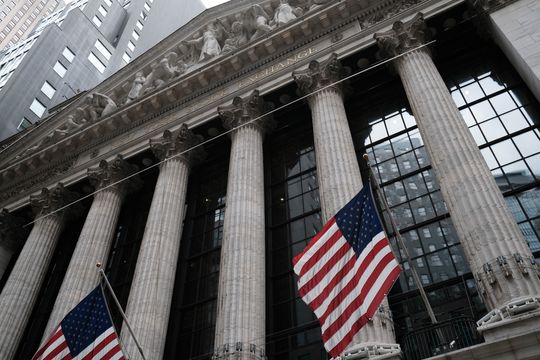Oil prices jump 5%, after 13% slump
U.S. stock futures rose Monday, following a steep selloff Friday sparked by fears of the global economic impact of a worrisome new variant of the coronavirus that causes COVID-19.
How are stock-index futures trading?
- Dow Jones Industrial Average futures YM00, 0.67% rose 200 points, or 0.6%, to 35,065,
- S&P 500 futures ES00, 0.81% gained 0.8% to 4,631
- Nasdaq-100 futures NQ00, 0.93% rose 0.9% to 16,204
In a holiday-shortened session on Friday, the Dow Jones Industrial Average DJIA, -2.53% slumped 905.04 points, or 2.5%, to 34,899.34, with the index logging its worst daily drop since Oct. 28, 2020, according to FactSet data. The S&P 500 SPX, -2.27% fell 106.84 points, or 2.3%, to 4,594.62, and the Nasdaq Composite Index COMP, -2.23% sank 353.57 points, or 2.2%, to 15,491.66.
What’s driving the markets?
On Friday, Wall Street suffered its worst day in more than a year amid growing concerns over the new omicron variant of COVID-19. The World Health Organization’s technical advisory group on Friday declared it a “variant of concern,” and a number of countries imposed flight bans from countries in southern Africa, where the variant was first discovered. Omicron has been detected in around a dozen countries, according to media reports.
Little is known about omicron, but investors Friday braced for bad news. Still, some were focusing on preliminary indications of “mild” symptoms among those who had tested positive.
Dr. Angelique Coetzee, the South African doctor who was first to spot the new variant, told the BBC over the weekend that patients she had seen had “extremely mild symptoms.” But she added that it wasn’t clear yet how the disease would affect more vulnerable people, a view that was echoed elsewhere.
“The pandemic and COVID variants remain one of the biggest risks to markets, and are likely to continue to inject volatility over the next year(s),” Keith Lerner, co-chief investment officer and chief market strategist at Truist Advisory Services, wrote in a Friday note. “It’s hard to say at this point how lasting or impactful this latest variant will be for markets.”
Investors will get important economic updates this week, which ends with November nonfarm payroll on Friday. Pending-home sales are due for Monday.
Retailers will remain in focus for Cyber Monday, another big post-Thanksgiving shopping day. Adobe Analytics reportedly said online shoppers spent $8.9 billion this year, at the low end of its expectations and slightly short of the $9 billion that was spent in 2020.
Crude oil futures were also rebounding from a plunge Friday, with benchmark U.S. crude CLF22, 5.11% up 5% to $71.61 a barrel, and Brent crude BRNF22, 4.47%, the international benchmark, jumping more than 4% higher to $76.08 a barrel.
Investors are awaiting this week’s OPEC gatherings, with a couple of technical meetings reportedly delayed so that members can assess the variant and price action. WTI slumped 13.1%, to close at $68.15 a barrel on the New York Mercantile Exchange on Friday, the biggest one-day drop for a front-month contract since April 20, 2020, according to Dow Jones Market Data. Brent tumbled 11% and both contracts saw their lowest close since Sept. 9.

